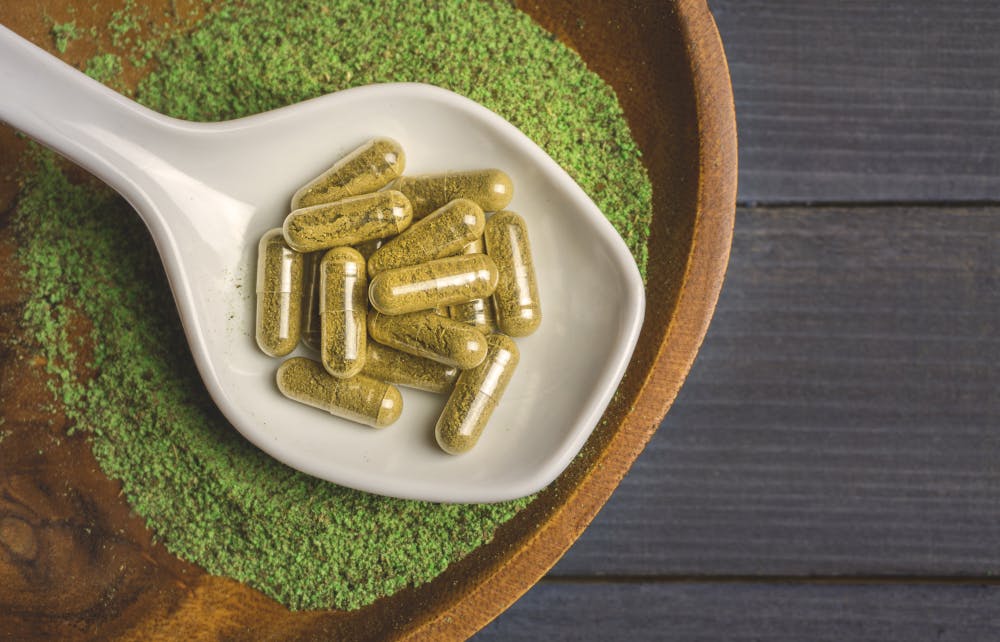How Much Does Kratom Cost?
Kratom is a highly addictive substance that is sometimes used by school students as they think it helps them study and manage anxiety. However, it’s efficacy has not been studied or approved. The street price of Kratom varies depending on its form and strain. In the United States, expect to pay $12 for 1 ounce of Kratom to $240 for 35 ounces.
If you or someone you know has an addiction to Kratom, call Zinnia Health at (855) 430-9439 to find out how we can help.

How Much Does Kratom Cost on the Street?
To buy Kratom isn’t illegal, so there isn’t a street price for the substance. As of 2023, Kratom remains legal in America. American Kratom users purchase Kratom online, in gas stations, and at corner stores in pill or powder form. Kratom powder is priced by the weight.
A typical price range, as seen on Kratom.org, is:
- 1 ounce $6-$12
- 8 ounces $30-$55
- 35 ounces $90-$240
What Factors Can Impact the Price of Kratom?
The price of Kratom (mitragyna speciosa) extract varies since it is not regulated. Some factors that drive the cost include:
- Strain — There are many strains of Kratom on offer. Popular strains like Green Meng Da are more affordable. On the other hand, exclusive strains like Yellow horn Kratom are more expensive. Exclusive strains are harder to farm and produce, accounting for the 10% markup, according to Kratom.org.
- Delivery — Purchasing Kratom in person is less expensive than purchasing it online due to inflated shipping costs. Leaves are the cheapest to order online since they weigh less, and tinctures are more expensive.
- Quantity — People who use Kratom often buy in bulk to save.
- Quality — Certified Kratom and Kratom sold by reputable vendors are more expensive.
How Much Does Kratom Cost in Other Countries?
As of 2023, there isn’t any reliable data around the street cost for Kratom in other countries.
Kratom, also called mitragynine, remains legal in countries like Malaysia and Indonesia where Kratom use is acceptable. People in Southeast Asia use Kratom extract traditionally to treat anxiety, diabetes, and diarrhea. However, more medical studies are needed to support these effects of Kratom.
Using Kratom for anxiety may put you at risk for addiction. Consult your healthcare physician or a specialist at Zinnia Health to address your anxiety and get back to living on your terms. For more information, call (855) 430-9439.
What is the Trend for People Searching for Kratom?
The popularity of Kratom is reflected in Google Trends. In the past five years, terms like “Kratom near me” continued to trend.
Other trending queries include:
- “Kratom vs CBD”
- “trainwreck Kratom”
- “Kratom strain chart”
Frequently Asked Questions (FAQ)
What Does Kratom Look Like?
Kratom is available in various forms. These include leaves, tablets, tinctures, and powder.
- Leaves — Kratom leaves are dark green and 4 to 6 inches long.
- Tablets — Kratom tablets are large. Some are compressed and hard, while others are clear with powdered Kratom leaves.
- Powder — Kratom powder ranges in color from tan to brown and lime green to deep green.
- Tincture — Kratom tincture is golden yellow.
What is the Legal Status of Kratom?
As of 2023, Kratom remains legal in the United States. However, a request was made in 2016 to place the drug on a controlled substance schedule due to its risk for addiction.
However, according to the Food and Drug Administration (FDA), Kratom is not appropriate for conventional dietary supplement use. Due to a lack of scientific data, there isn’t enough information on safety, risks, or injury to promote its use.
For these reasons, the FDA determined that Kratom cannot be lawfully marketed as a drug, supplement, or food additive in the United States.
How is Kratom Used?
People who purchase Kratom leaves chew them to get the effects. Others mix the powder into water or other liquids and brew it as tea. However, the most popular way to take Kratom is to swallow tablets.
Why is Kratom Dangerous?
The National Institutes of Health News and Health states that Kratom products may contain harmful contaminants like heavy metals and bacteria. These additives are purposely added by Kratom vendors to enhance the effects of Kratom.
Kratom has also been reported to cause stimulant and psychoactive hallucinogenic effects. Kratom is a stimulant at a low dose, similar to drugs used for treating ADHD. At a higher dose, the substance causes opioid-like sedation effects and opioid withdrawal.
People who use Kratom at a low dose report symptoms like alertness and rapid heart rate. Those using higher doses report constipation and confusion.
Rare but serious side effects are more troubling, such as seizures and liver damage. The National Institute of Drug Abuse states that severe adverse effects, such as death, have been reported when Kratom is combined with other substances.
Getting Help for Kratom Addiction
According to the Child Mind Institute, Kratom addiction isn’t always apparent. People are often unaware that they have an addiction until they try to quit and experience withdrawal symptoms.
These symptoms include anxiety and nervousness. However, Kratom may contain additional ingredients subject to their withdrawal symptoms.
If quitting Kratom on your own proves difficult, consult an expert. An expert at Zinnia Health drug rehabilitation facility can help you find ways to quit safely and effectively.
Our state-of-the-art facilities provide evidence-based therapies, like 12-step cognitive behavioral therapy and medication-assisted detox, to curb cravings and treat withdrawal symptoms.
For more information on how we can help you overcome Kratom addiction and substance use, call Zinnia Health at (855) 430-9439.

